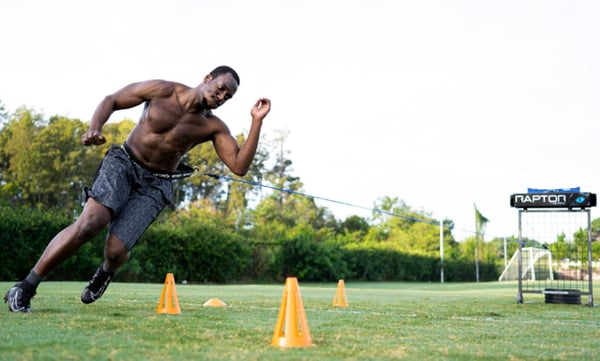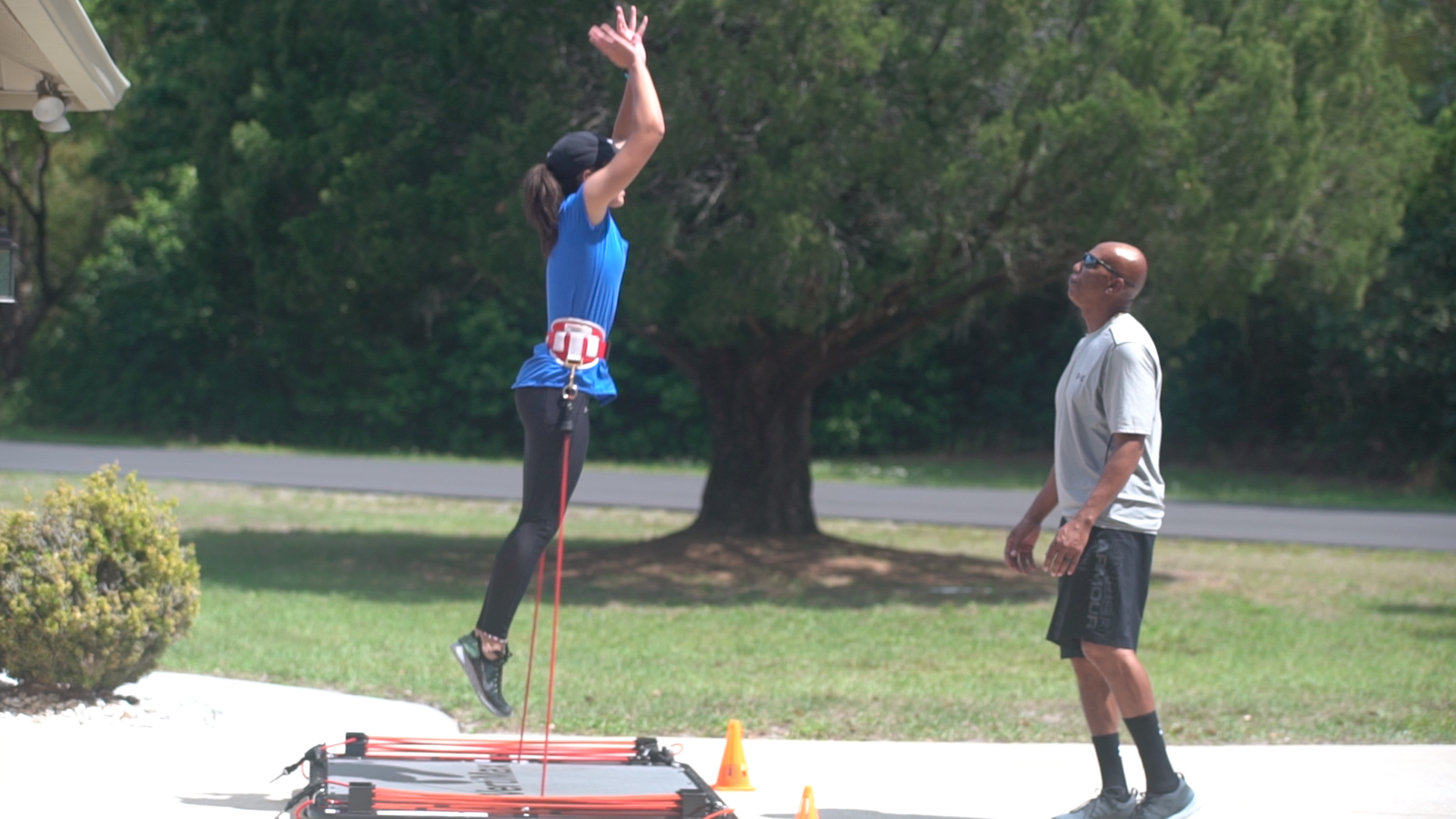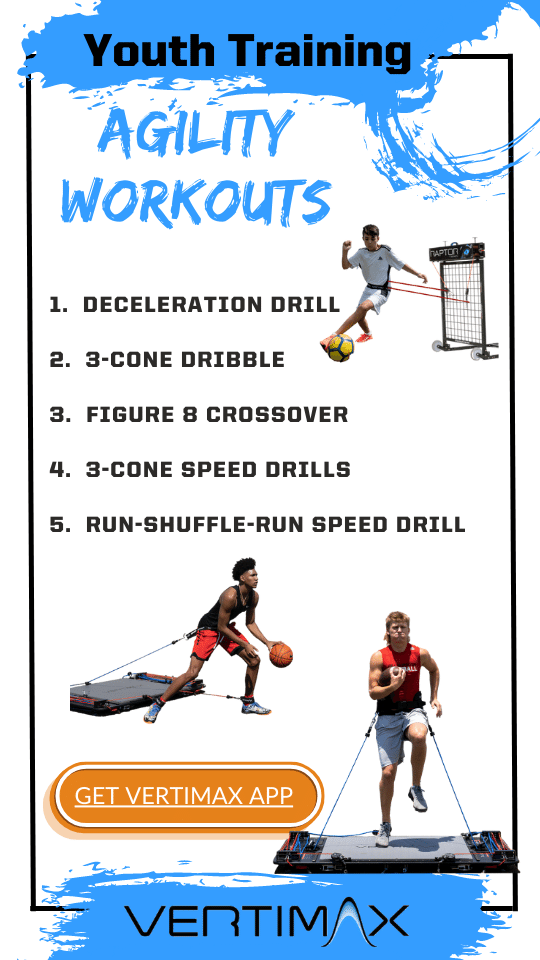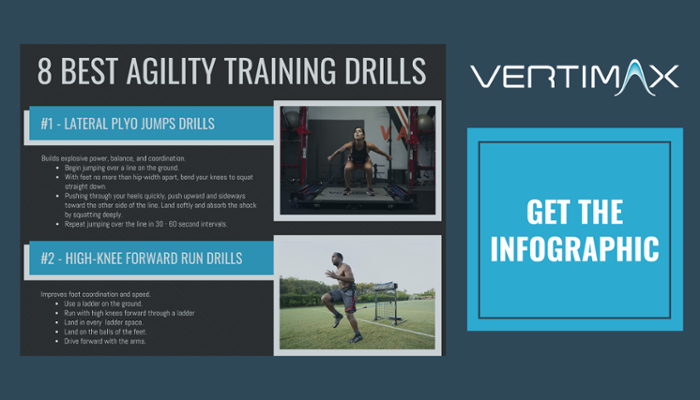Regardless of the sport, speed and agility training exercises are essential to developing a young athlete's performance and ability. Agility training exercises help to teach young athletes healthy habits, proper body positioning, balance, coordination, and hand-eye coordination.
We've compiled a list of tips and the best agility training workouts designed to improve a young athlete's skills, speed, agility, and overall athletic development.
Generally speaking, a stronger muscle is a faster muscle. However, sending a young athlete to the weight room to hammer out curls, benches, and squats may not be effective. Additionally, it can also result in injury or burnout.
Youth athletes can be categorized into three primary school levels: Elementary School, Middle School, and High School. The youth agility training exercises for a youth athlete in Elementary or Middle School differs from training for a High School athlete. Each age group has distinct growth and developmental stages, which require specific types of agility training drills to maximize speed and strength development. That is why we recommend age-appropriate strength training.
You may also want to learn more about why VertiMax resistance technology is so helpful for youth athletes in developing and improving agility, speed, power, and vertical here. The consistent resistance allows young athletes to load appropriately.
Top Agility Training Workouts for Youth Athletes
1. Deceleration Drill
Non-impact injuries typically occur when landing after a jump or slowing down after running full speed. They commonly refer to this act of landing or slowing as deceleration. Deceleration is vital to training not only to reduce the risk of injury but also to improve performance.
- Start by having your athlete jump up as high as possible on one leg, safely landing on the same leg.
- Immediately have them lower the opposite foot, taking 3 full seconds to lower the foot to the ground.
- Take an additional 3 seconds to lower into a full squat with both legs.
- Repeat 8 reps on each leg.
This youth agility training exercise helps an athlete gain an appreciation for the balance and control required to accelerate and decelerate.
2. 3-Cone Dribble (Soccer)
Designed to develop and improve coordination, reflexes, power and stability in the core and hip reflexes, this agility training exercise is ideal for multi-functional athletes taking part in any sport.
- Set up cones in a straight line, about 15 yards in front of the athlete, placing 15 yards between each cone.
- Stand in front of the VertiMax, with light or medium resistance loaded at the waist.
- Begin static dribbling.
- Prompt your athlete to dribble the ball away from the platform, towards a specific cone.
- Repeat with various cones for 1-2 minutes.
- Increase your VertiMax load based on individual ability and progress.
For more seasoned athletes, they can complete 3 Cone Dribble drills with resistance loaded at the ankles. This will teach athletes to break ground while they are picking up their feet. When you load resistance at the ankles, it requires more focus on hip rotators and proper hip alignment.
3. Figure 8 Crossover
Although commonly used in basketball training, Figure 8 Crossover drills are one of the best agility training exercises to improve hand-eye coordination.
- Set up four to six cones in a straight line, leaving about one meter between each cone (adjusting length based on the height of your athlete’s stride).
- Proceed to dribble the basketball, weaving in a Figure 8 between the cones.
- Be sure the athlete keeps their head up, while maintaining a low stance while dribbling the ball.
- Repeat 6 - 8 times.
For an additional challenge, complete the Figure 8 Crossover agility training exercise with a VertiMax loaded at the waist.
4. 3-Cone Speed Drills
3 Cone Drills, also known as an L Drill, are a popular agility training workout used by coaches and parents to develop change of direction ability and speed.
- Set your cones up for the 3 Cone Drill.
- Start at the cone (or line) in a 3 Point Stance.
- Come out low for about 5 yards under control.
- Touch the line at the center cone.
- Immediately return to the start cone and touch the line using the same hand.
- Turn and sprint back around the center cone, planting off your inside foot for a hard turn and figure eight around the end cone (again, planting your inside foot).
- Make a sharp cut around the middle cone with your inside foot, and sprint back to the starting cone, finishing the drill.
Repeat this pattern going the other direction, always going the same among both to the right and to the left.

5. Run-Shuffle-Run Speed Drill
The ability to transition in and out of a lateral shuffle is essential in sports, such as baseball, basketball, tennis, and football. This agility training exercise develops the muscles needed to open the hips from a sprint into a lateral slide. While important for football linebackers, this skill is essential for all sports.
- Set up four cones in a straight line, 5 yards apart from each other, with the middle two cones 4 yards apart to mark the shuffle zone (i.e. a spacing of 5 yards between each set of end cones, and 4 yards between the middle cones).
- Start at the first cone and sprint to the second cone (5 yards).
- Laterally shuffle from the second to third cone (4 yards).
- Sprint between the third and fourth cone (5 yards).
- Immediately repeat in the opposite direction, in the same pattern (i.e. run-shuffle-run).
Practice In Multiple Directions
Coaches and parents tend to focus only on linear speed. While an athlete’s “40-meter” time is a great way to measure their ability and speed, it's not very practical in reality. When was the last time you saw your child run in a straight direction down the field?
Most sports require athletes to move in multiple directions, frequently changing direction often. Youth agility training exercises develop the muscles as skills needed for changing direction in a swift, balanced, and skillful manner.
Try More Agility Training Drills
Agility Training for Youth Sports
As with all other youth training programs, it's important to remember that youth athletes require training for their specific stage of growth and development. You wouldn’t expect your ten-year-old child to drive a car. Similarly, you shouldn't expect a child to behave like an older, mature athlete with an age-appropriate hormonal and muscular response to training. See sports performance training thoughts for youth coaches.
Adding these fundamental agility training exercises to youth sports conditioning sessions will increase their speed and agility within a few weeks. Helping youth athletes increase their agility and speed is as much a physical challenge as it is mental. Remember, kids need to have fun while they train. If you make it fun and effective, you’ll enhance their speed, agility, and long-term athleticism.







.png?width=110&name=Listing%20Image-basketball%20ladder%20drill%20%20(350%20x%20350%20px).png)














